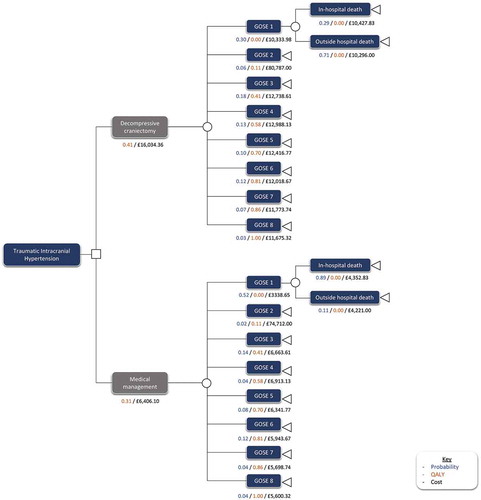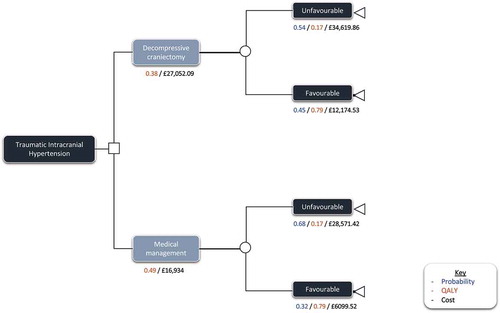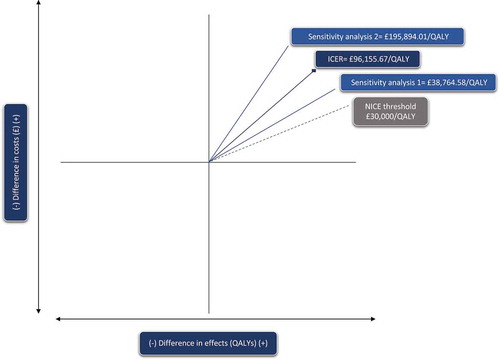Figures & data
Figure 1. Decision tree for medical management versus decompressive craniectomy for traumatic intracranial hypertension

Table 1. Probabilities associated with terminal nodes of the surgical arm and medical arm of the Markov model
Table 2. QALYs derived from GOS-E scores
Table 3. The expected costs and QALYs gained from the two therapeutic branches over the 1-year time horizon
Table 4. The ICER, NHB and NMB of both the original model and sensitivity analyses
Figure 2. The redesigned Markov model, in which GOS-E outcomes have been categorized into either ‘favorable’ or ‘unfavorable’

Supplemental Material
Download MS Word (131.1 KB)Data availability statement
The authors confirm that the data supporting the findings of this study are available within the article and its supplementary materials.


